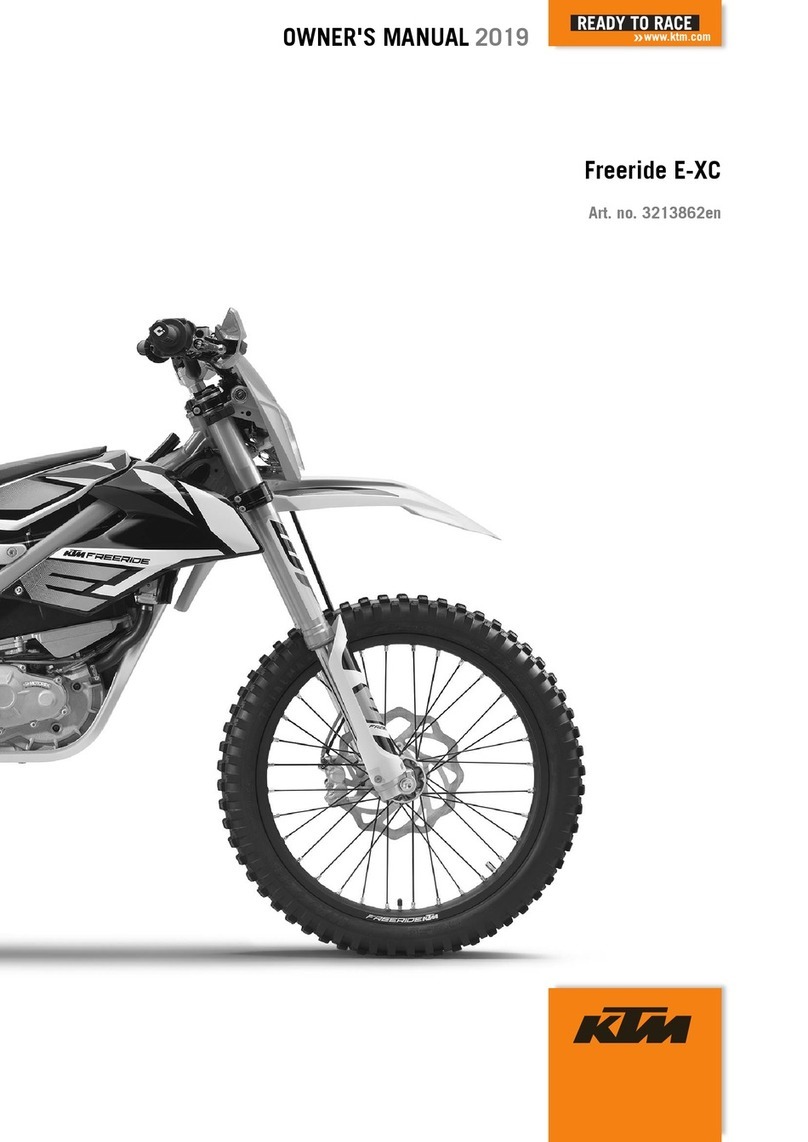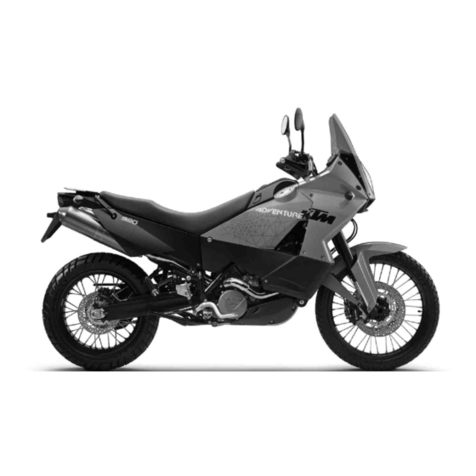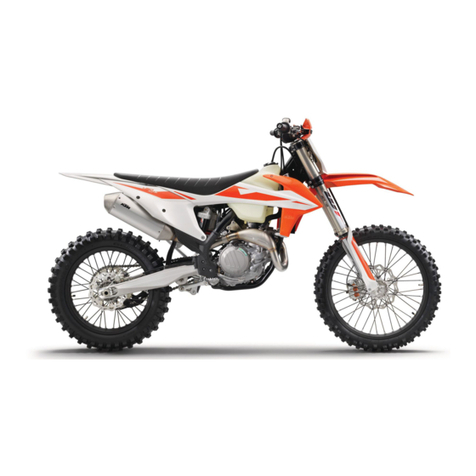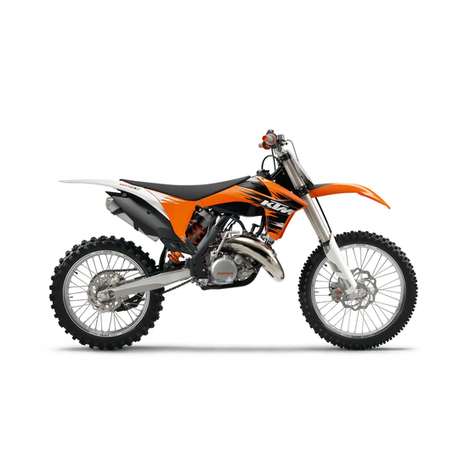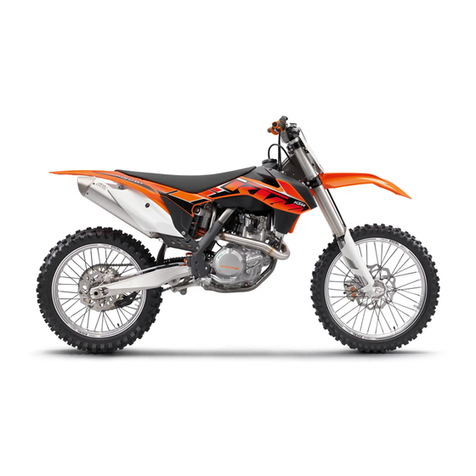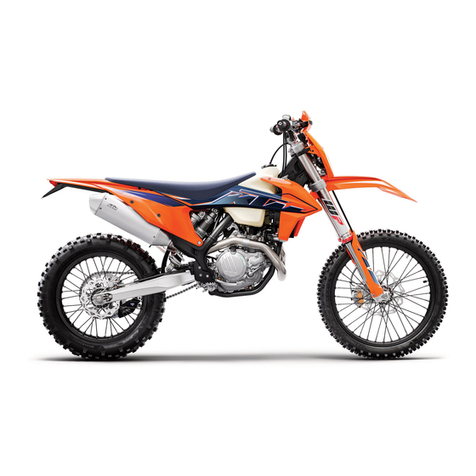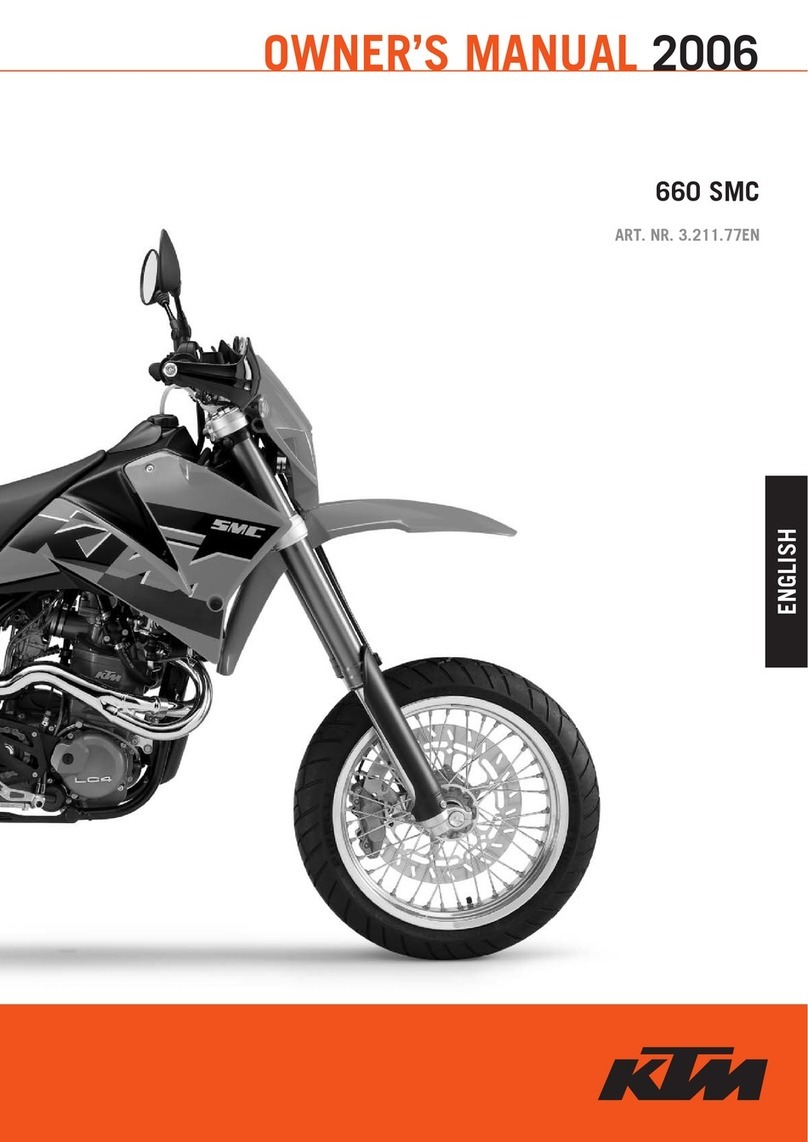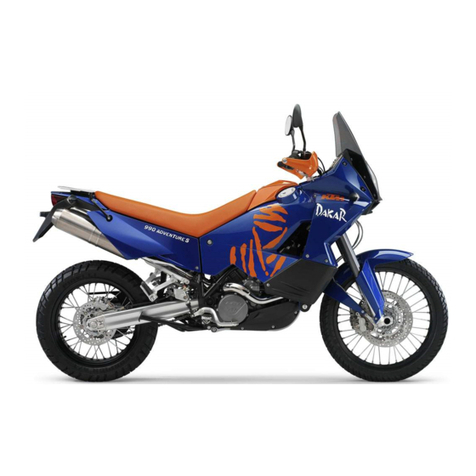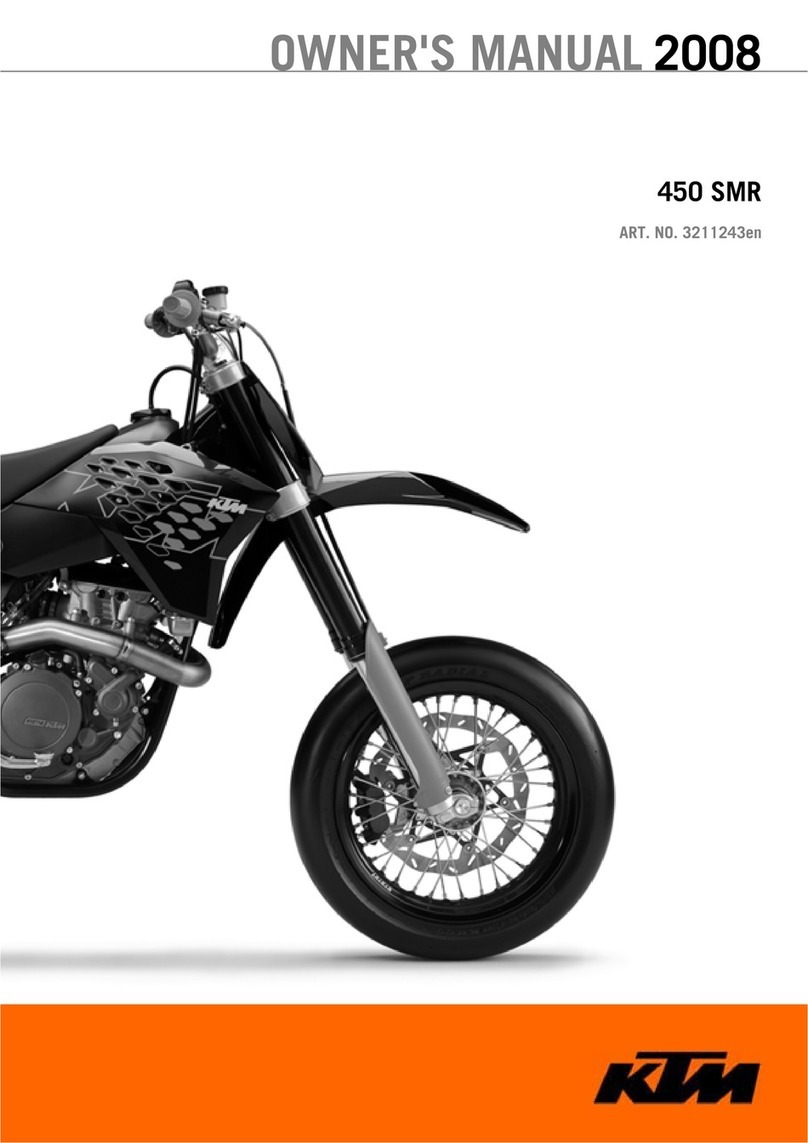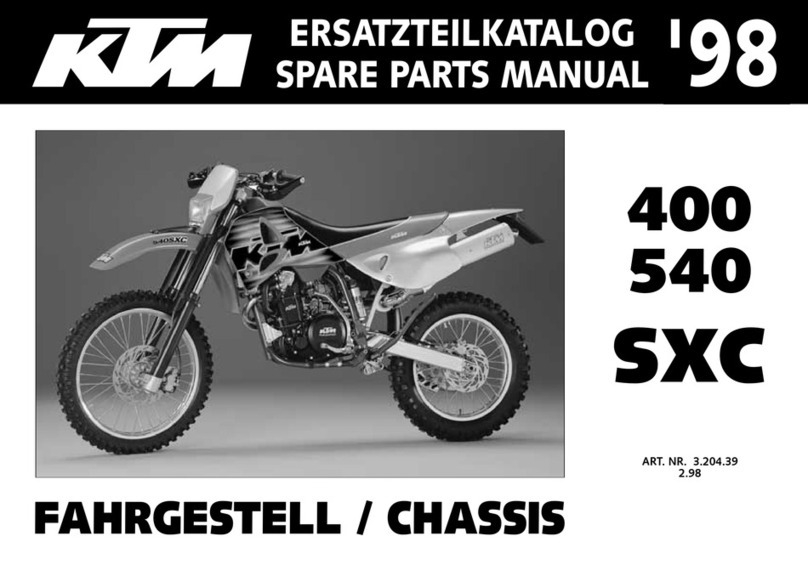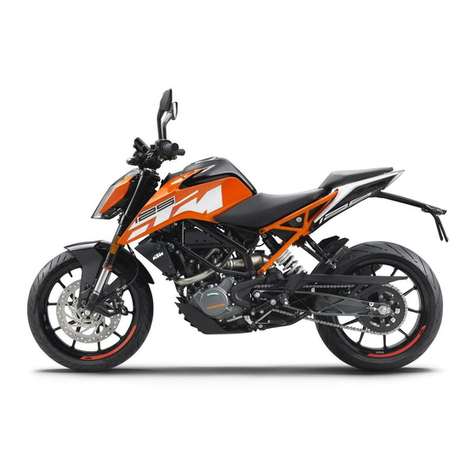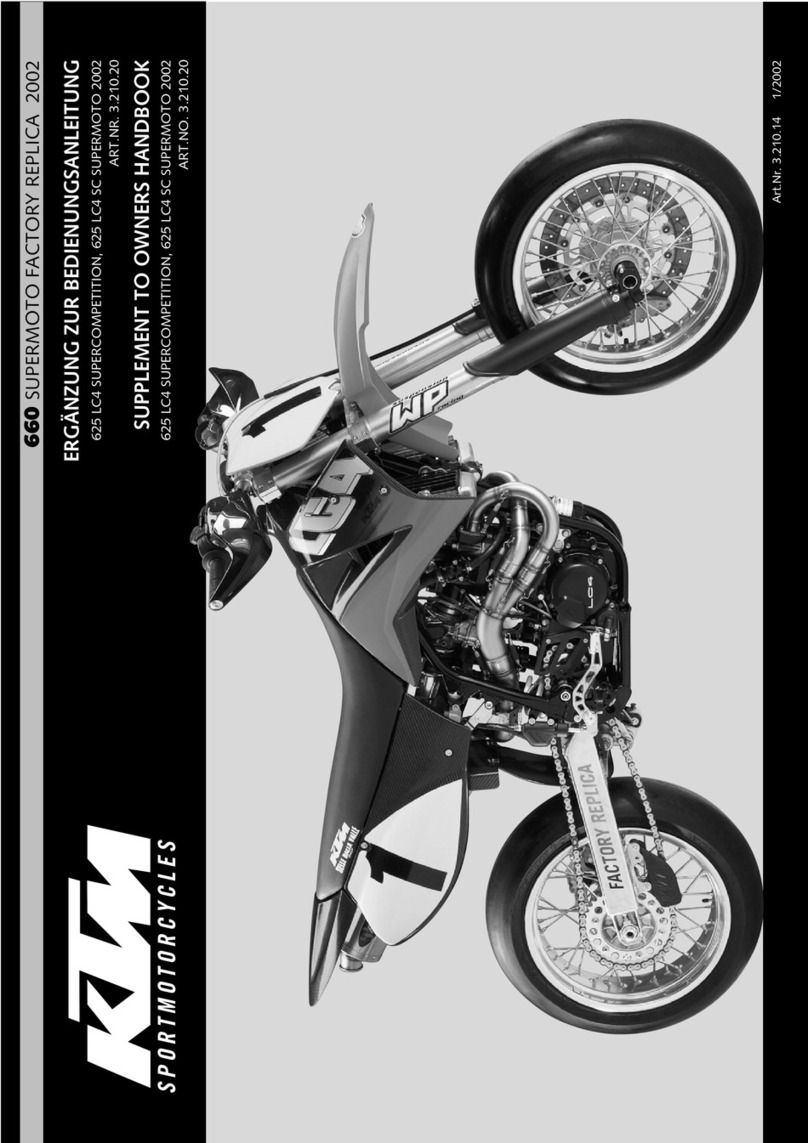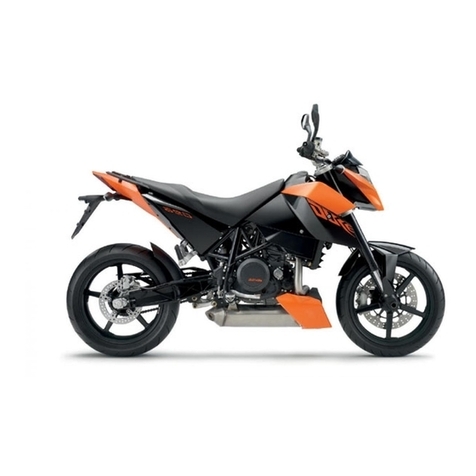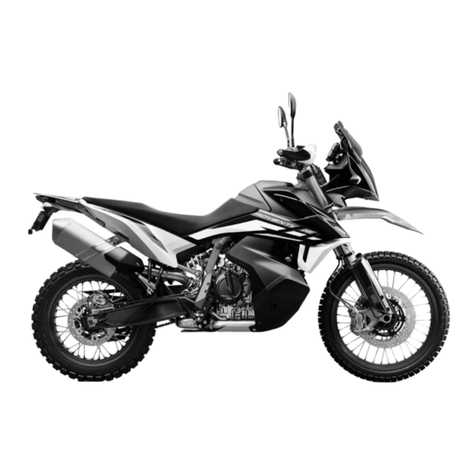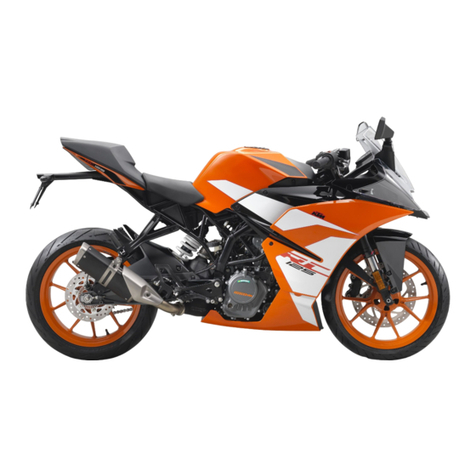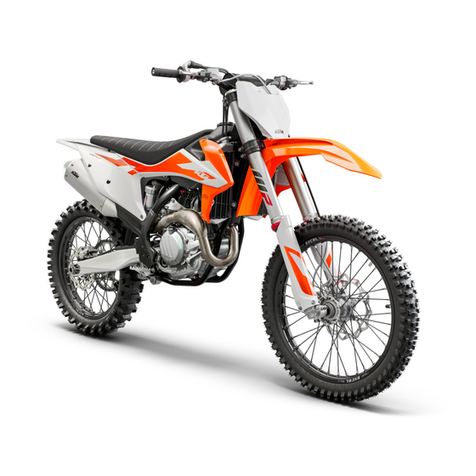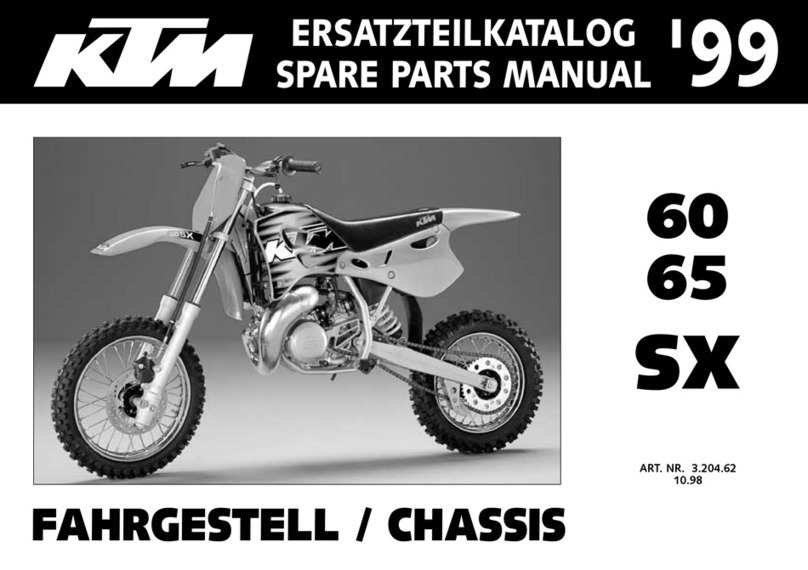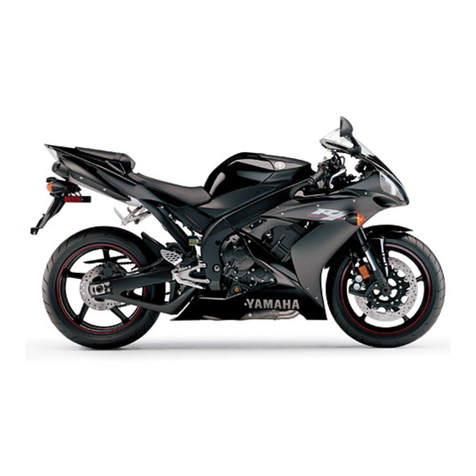
WORK 6
3.1Removing the seat
101104-10
–Insert the ignition key in the seat lock and turn it clockwise.
–Raise the rear of the seat, push it towards the rear, and remove it upwards.
–Remove the ignition key from the seat lock.
3.2Mounting the seat
101139-10
–Position front recesses of the seat on the oval head screws of the fuel tank,
lower the rear and simultaneously push it forward. Both lugs must hook into the
frame and locking bolt must be inserted into the lock housing.
The seat engages with an audible click.
–Finally, check that the seat is correctly mounted.
3.3Recharging the battery
Warning
Risk of injury Battery acid and battery gases cause serious chemical burns.
–Keep batteries out of the reach of children.
–Wear suitable protective clothing and goggles.
–Avoid contact with battery acid and battery gases.
–Keep the battery away from sparks or open flames. Charge only in well-ventilated areas.
–In the event of skin contact, rinse with large amounts of water. If battery acid gets in the eyes, rinse with water for at least
15 minutes and contact a physician.
Warning
Environmental hazard The battery contains elements that are harmful to the environment.
–Do not discard batteries with the household trash. Dispose of a defective battery in an environmentally compatible manner.
Give the battery to your KTM dealer or to a recycling center that accepts used batteries.
Warning
Environmental hazard Hazardous substances cause environmental damage.
–Oil, grease, filters, fuel, cleaners, brake fluid, etc., should be disposed of as stipulated in applicable regulations.
Info
Even when there is no load on the battery, it discharges steadily.
The charge state and the type of charge are very important for the service life of the battery.
Rapid recharging with a high charging current shortens the battery's service life.
If the charging current, charging voltage and charging time are exceeded, electrolyte escapes through the safety valves. This
reduces the battery capacity.
If the battery is depleted from starting the vehicle repeatedly, the battery must be charged immediately.
If the battery is left in a discharged state for an extended period, it will become over-discharged and sulfate, destroying the
battery.
The battery is maintenance-free, i.e., the acid level does not have to be checked.
–Switch off all power consumers and switch off the engine.
–Remove the seat. ( p. 6)
–Disconnect the negative (minus) cable of the battery to avoid damage to the motor-
cycle's electronics.
